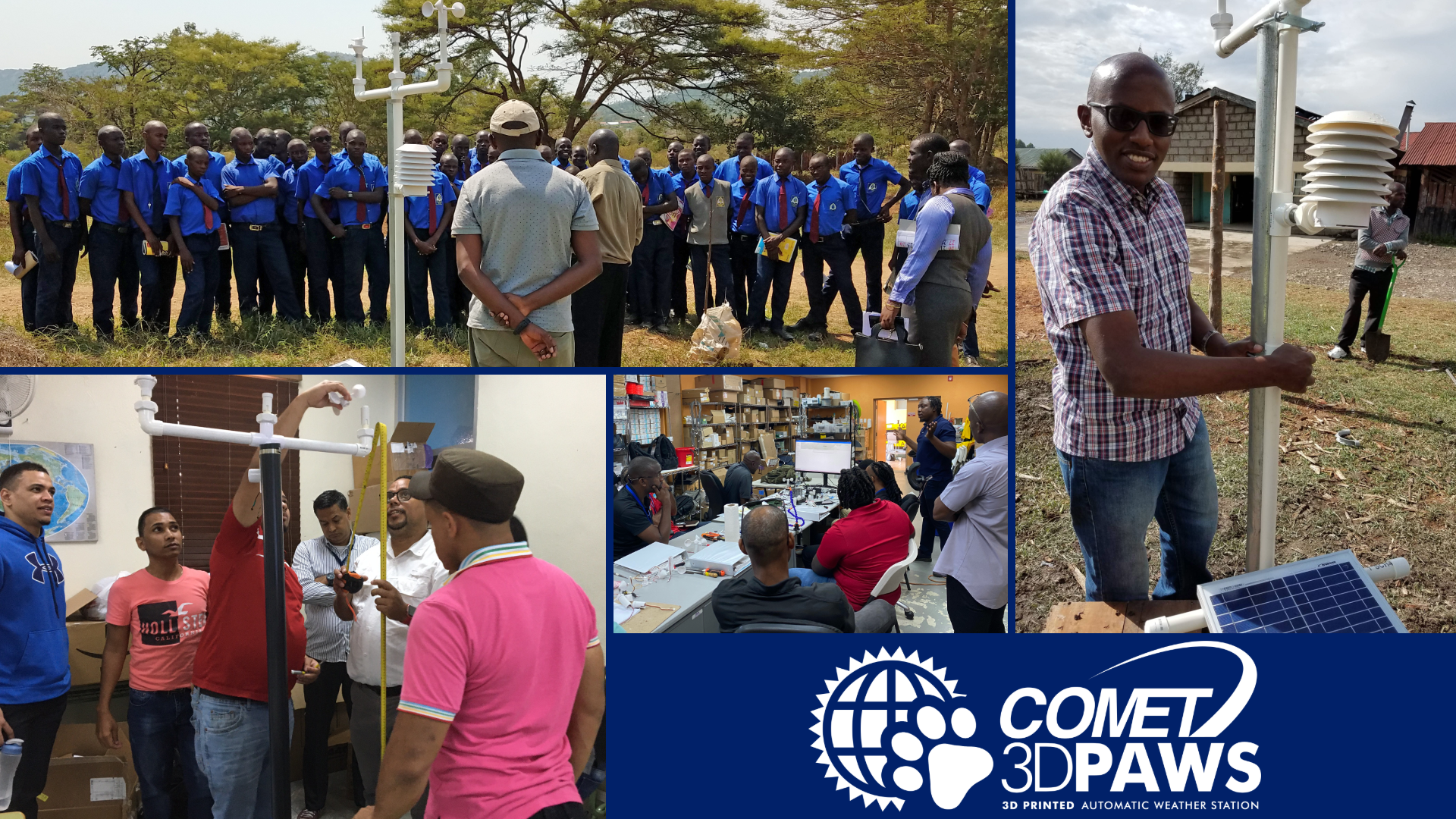Ten Years of 3D-PAWS: COMET Launches 3D-PAWS Regional Training Centers
How have our 3D-Printed Automatic Weather Stations (3D-PAWS) impacted global meteorological services and communities since its inception in 2014?
3D-PAWS Turns 10
Early warning of severe weather events saves lives. In many parts of the world, however, weather observation networks fall short of reaching every community. Expanding these networks to the extent necessary is often cost-prohibitive or challenging to maintain.
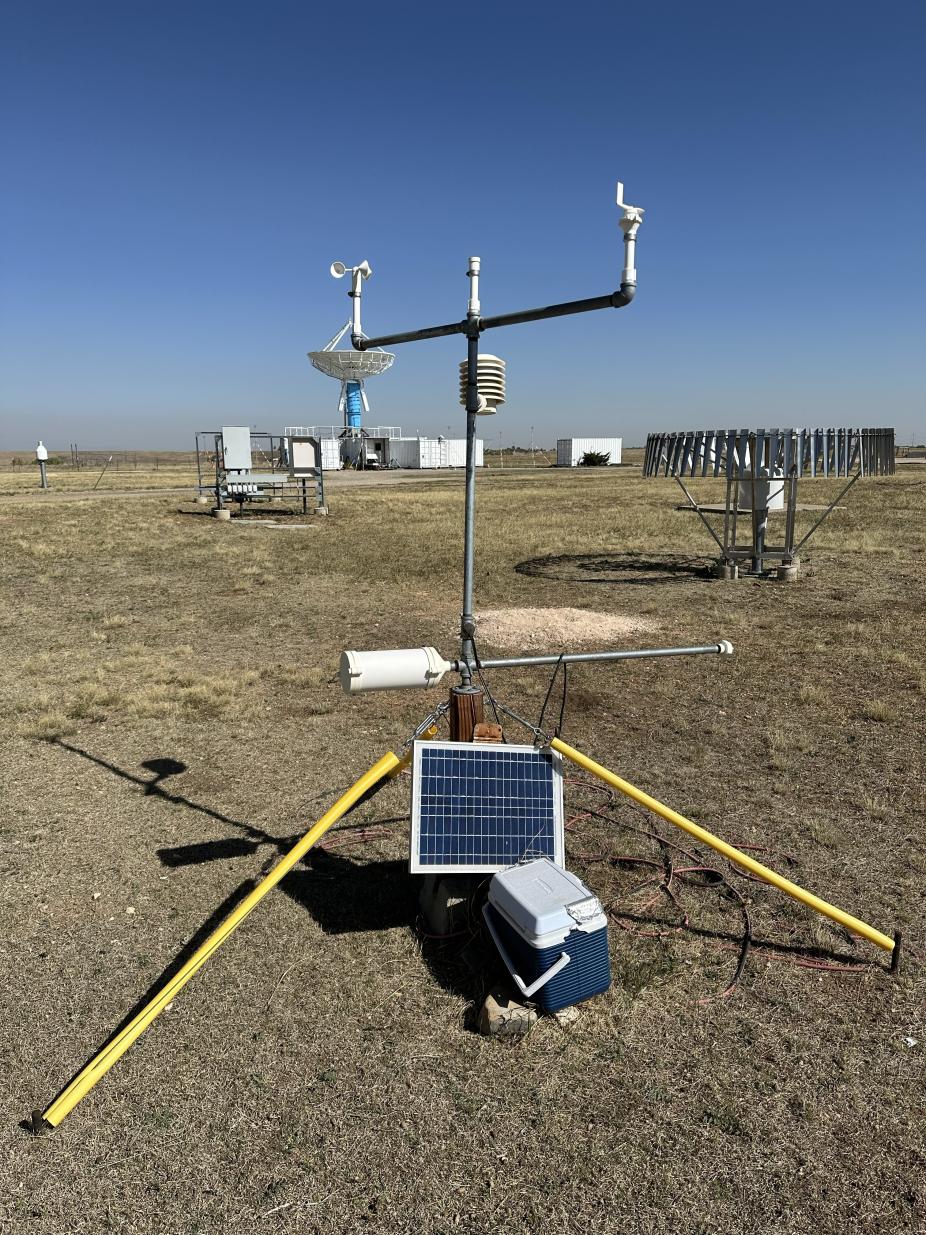
Many updates to the 3D-PAWS unit have been made since this early model was created, which stands at the NSF NCAR Marshall Field in Boulder, CO.
Ten years ago, Paul Kucera and Martin Steinson— the COMET Innovative Capacity Development Program Assistant Director and engineer, respectively—implemented the groundbreaking idea that was first developed by a former UCAR staff member, Kelly Sponberg: Could we use 3D-printers to create low-cost and sustainable weather stations to boost weather observation networks for data-sparse regions?
This idea led to the creation of the 3D-Printed Automatic Weather Stations (3D-PAWS) initiative, established by the U.S. National Weather Service (NWS) International Affairs Office (IAO) and the University Corporation for Atmospheric Research (UCAR), along with support from the United States Agency for International Development (USAID) Bureau of Humanitarian Assistance (BHA).
Since then, the COMET Innovative Capacity Development Program (ICDP) team has helped partners fabricate, build, and maintain over 250 3D-PAWS systems across 17 countries.
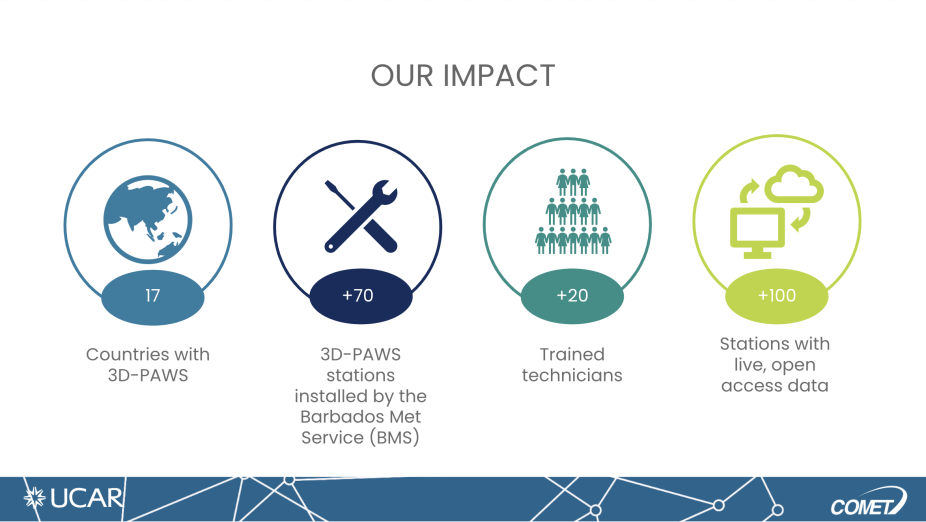
The impacts of the COMET Innovative Capacity Development Program 3D-PAWS initiative.
Why 3D-PAWS?
The Issues
Between 1999 and 2018, hydrometeorological disasters affected more than 4 billion people globally, causing more than 500,000 deaths, and resulting in an estimated $2.2 trillion in economic damages (USAID).
Expanding the density of weather observation networks saves lives and livelihoods. Increasing the number of automatic weather stations (AWS), particularly in data-sparse, remote regions provides observations to create higher resolution regional forecasts and provide improved early warnings of high-impact weather events.
However, National Meteorological and Hydrological Services (NMHS) in many developing countries lack the financial or human resources to purchase, install, operate, and maintain weather observing equipment on a wide scale. Without proper financial and service support, AWSs are often operational for a short period but—due to a lack of assistance, spare parts, and maintenance—will eventually fail without any mechanism to repair the station.
How 3D-PAWS Helps
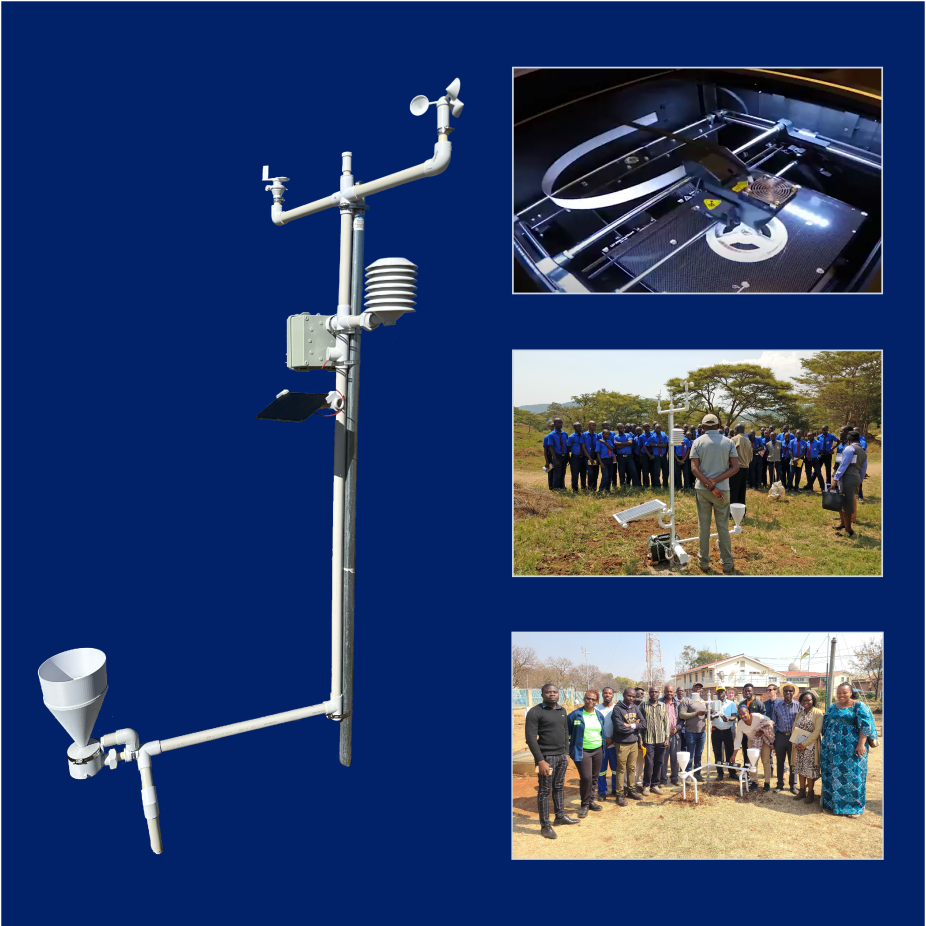
3D-PAWS provides a low-cost, sustainable solution for increasing weather observation networks globally.
The 3D-PAWS initiative was designed to overcome the main roadblocks for expanding weather observation networks: cost, sustainability, and human resources.
Cost: 3D-PAWS use low-cost, reliable microsensors and components that can be fabricated locally for a cost of $400-500 USD.
Sustainability: The parts for 3D-PAWS can be quickly “reprinted” for easy replacement if lost, stolen, or broken.
Human resources: The COMET ICDP provides customized training, manuals and documentation, and other resources to enable local agencies to take ownership in building and maintaining their 3D-PAWS. Real-time sensor data is available on the Cloud-Hosted Real-time Data Services for Geosciences (CHORDS) project data servers and is accessible to anyone at anytime.
3D-PAWS Regional Training Centers
COMET’s ICDP team continues to develop into a robust team of scientists, engineers, project coordinators, meeting planners, technical and administrative support to keep up with the success of the 3D-PAWS initiative. These team members travel across the globe to train local national meteorological services and communities on how to fabricate, build, and maintain 3D-PAWS and its sensors.
As of September 2024, the team has established 3D-PAWS in 17 countries, including Barbados, Dominican Republic, El Salvador, Curacao, Trinidad and Tobago, Senegal, France, Germany, Austria, Turkey, Bangladesh, Uganda, Kenya, Zambia, Zimbabwe, and the United States. While the COVID-19 pandemic slowed down training for two years, demand has steadily increased with the team leading twelve trainings between 2022 to 2024.
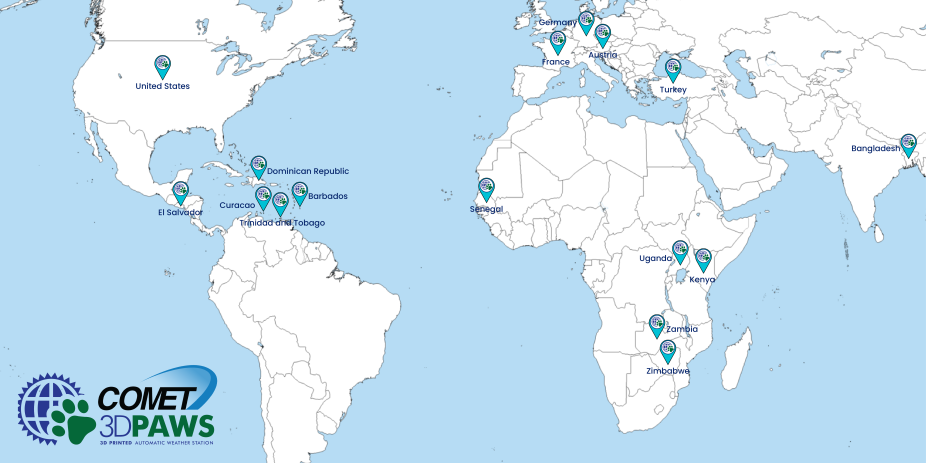
A map of countries with 3D-PAWS.
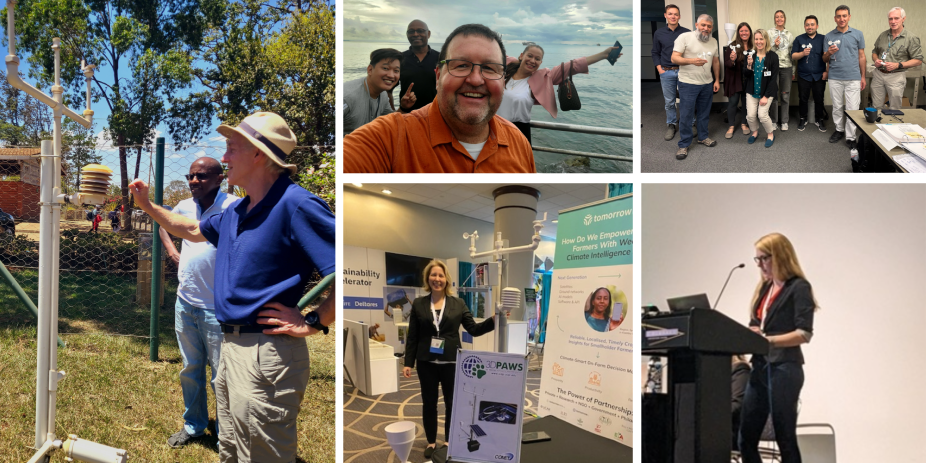
COMET's ICDP team.
The team also provides extensive training for teams of meteorologists, either on-location or at the COMET Training Center in Boulder, Colorado.
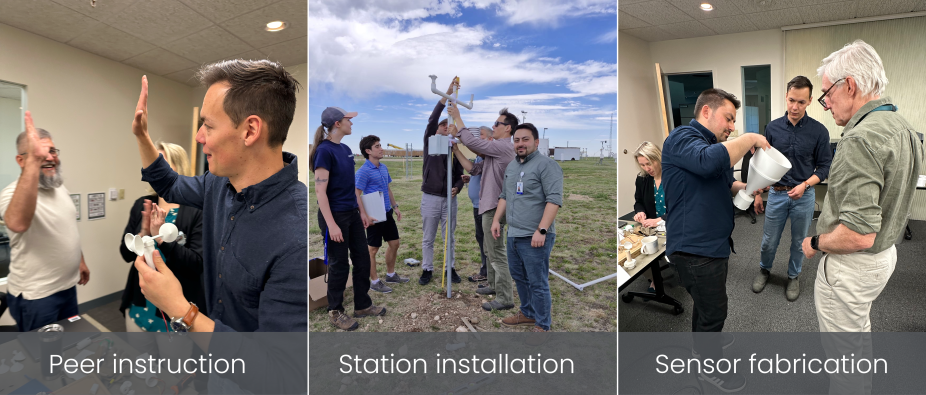
ICDP team members training meteorologists from the Turkish Met Service at Boulder, Colorado, USA, in 2024.
As the number of 3D-PAWS networks continues to grow, there is a need to work with national meteorological services to provide continuous local 3D-PAWS training. The ICDP team began working to establish 3D-PAWS Training Centers in strategic regions around the world. These centers would contain all the necessary equipment, materials, and expertise needed for training local technicians on how to fabricate, build, and maintain 3D-PAWS, how to set up and access sensor data, and more.
Barbados Meteorological Services becomes a 3D-PAWS Regional Training Center Leader
In 2024, COMET’s ICDP team and Barbados Meteorological Services (BMS) launched the first 3D-PAWS Regional Training Center. The BMS trained eight technicians from meteorological services offices of Jamaica, Bahamas, Turks, Caicos, and Grenada during the two-week workshop while ICDP members provided support.
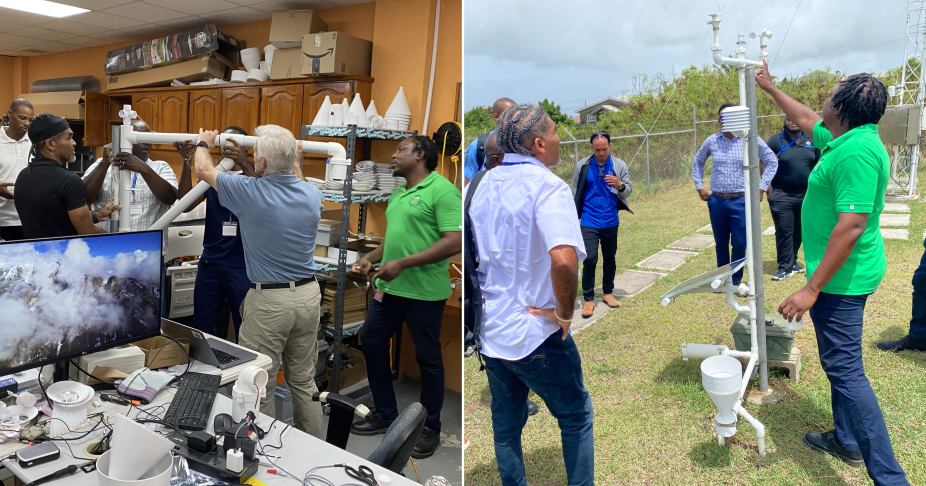
Participants build and install a 3D-PAWS during the first regional training workshop in Barbados, 2024.
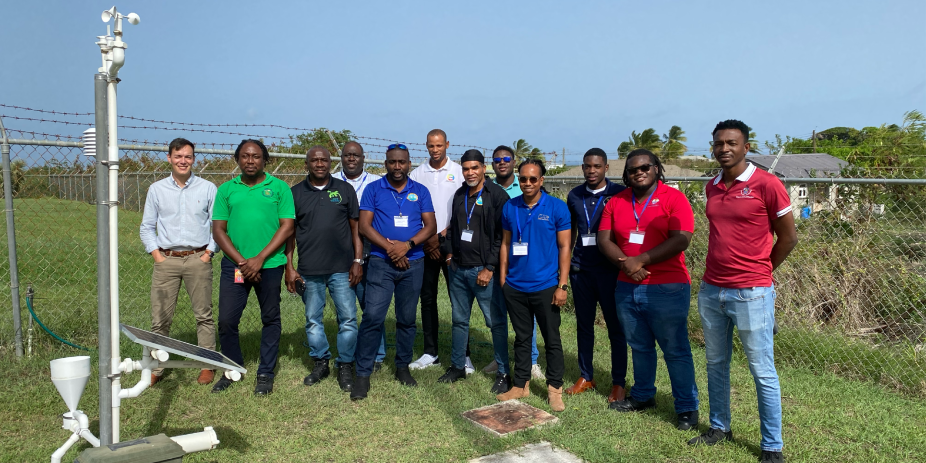
Meteorologists from across the Caribbean and ICDP team members in Barbados pose with a 3D-PAWS unit they installed as part of a regional training workshop in 2024.
The BMS fully embraced the 3D-PAWS initiative, becoming a leader and subject matter expert on the program with COMET, and now has installed over 90 3D-PAWS across Barbados. Prior to this, Barbados had just two operational weather stations for the entire island. Learn more about how 3D-PAWS transformed Barbados into an early warning powerhouse and helped the BMS keep communities safe during tropical cyclones and floods.
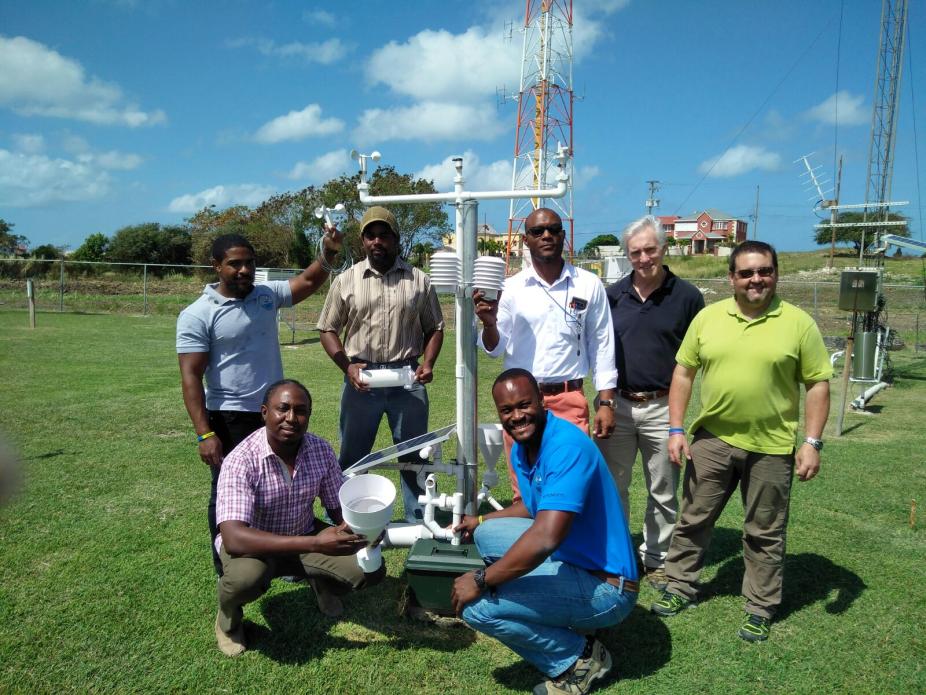
The first 3D-PAWS installed by the BMS with Paul Kucera and Martin Steinson in Barbados, 2018.
Future regional training centers are planned for regions across Eastern Europe, the South Pacific, and Southeast Asia. In addition, the team also held a train-the-trainer course for the Turkish State Meteorological Service at Boulder, Colorado, in May 2024, and the country is set to become a regional training center in the near future.
Learn More About ICDP
Want to learn more about COMET's Innovative Capacity Development Program? Check out the ICDP website here!
Once there, you'll learn about how ICDP provides innovative instrumentation, end-to-end early warning support, and more!
